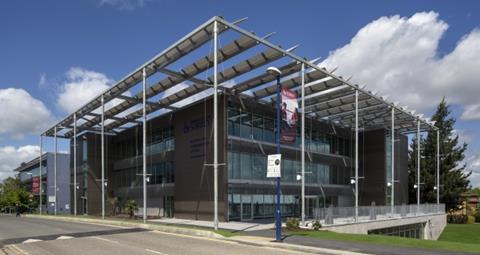With many broadcast vendors supporting 5G tests and trials, the nascent technology could lead to much more than faster mobile internet browsing.

At the beginning of August, a consortium including Verizon, Ericsson and Qualcomm achieved a wireless network speed of 953 Mb/s.
Much faster speeds have been achieved in the lab, of course, but this was a real-world, dynamic wireless network, in Boca Raton, Florida, using readily available components.
This demonstration used licensed assisted access (LAA), an Ericsson technology which boosts the speeds currently available with LTE networks. But it was an important step on the road to 5G.
Achieving close to gigabit speeds was impressive, but the goal for 5G is to routinely deliver 10 Gb/s capacity. And there is a long-term aim to achieve much more than that.
Developing 5G as standard
But, as Bogdan Frusina, founder of Dejero, points out “it is not a standard yet. And unlike LTE it is not a single technology: it is a way of managing a network using a combination of technologies.”
In an attempt to bring those technologies together, the University of Surrey in the UK has established a 5G Innovation Centre, which is now home to more than 170 researchers and backed by more than $100 million in investment funding. Already it has developed technology which will lead to terabit speeds.
“While we have already achieved record-breaking speeds, 5G is not only about delivering faster mobile internet,” said Professor Rahim Tafazolli, director of the centre. “It is a transformative set of technologies that will radically change our private and professional lives.”

Part of that potential is for media delivery.
Working in partnership with Chinese networking specialist Huawei and BBC R&D, the researchers have already demonstrated the technology’s capabilities in this area. Ultra HD 4K video is streamed to a mobile device over an enhanced outdoor network.
“The demonstration shows the capabilities 5G could hold for bandwidth-hungry applications. It provides much higher quality, less compressed images than 4G/LTE, streamed to a mobile device or television.”
IBC2017 conference session: What Will 5G Mean for media?
Grass Valley Vice President for Live Production Mark Hilton said: “We see the opportunities in improving distribution to the end user. For example, 5G could boost spectral density to support highly populated urban areas with better cell coverage for video streaming.”
Beyond the hype
Professor Tafazolli is confident of achieving 10 Gb/s per cell next year, 10 times faster than the best density delivered today by 4G.

Steve Plunkett, CTO for broadcast and media services at Ericsson, puts that into context:
“As our mobile devices increase in resolution and morph into AR and VR displays, they require a lot more bandwidth and low latency. A compressed 4K 360-degree live broadcast delivered to a VR-capable device will require between 300 Mb/s and 600 Mb/s for a high quality experience, and latency of 5ms to allow seamless stream switching as the viewer looks around. 600 Mb/s for a high quality experience, an 600 Mb/s for a high quality experience, and latency of 5ms to allow seamless stream switching as the viewer looks around.
“5G can deliver this, with latency as low as 1ms and end-user bandwidth as high as 10 Gb/s, alongside much greater cell capacity and density,” he explained.
A 2016 white paper from the EBU talks about the potential of 5G. “There is a growing recognition within the AV media industry that the stakeholders across the value chain need to work together in order to find sustainable delivery mechanism that will be able to meet the future needs of consumers, content producers, service providers and network operators. sustainable sustainable delivery mechanism that will be able to meet the future needs of consumers, content producers, service providers and network operators.
“In the short to medium term, the 5G initiative could be a vehicle towards a co-operative use of broadcast and broadband infrastructures. This alone could result in new business opportunities and partnerships. This would require the 5G eco-system to support a virtuous circle between content creation, demand for new services and applications, technological developments, and the infrastructure developments.”
”The 5G initiative could be a vehicle towards a co-operative use of broadcast and broadband infrastructures” - EBU
Grass Valley’s Mark Hilton agrees that the applications of 5G are not just in delivery to portable devices. “There could also be applications in digital signage,” he cited, “where 5G allows content owners to distribute video more easily.
The bottom line
“In terms of the impact of 5G on traditional broadcast operations, there may be situations in remote production where a 5G connection serves as either a primary or secondary (backup) channel in cases where wired networks are not available or have failed for some reason.”
Ericsson’s Steve Plunkett also offers a word of warning: “The potential for 5G is compelling, but of course it comes at a cost. To fully realise the increased capacity and performance, 5G makes use of additional spectrum and greater network density.”
IBC365 Webinar: 5G and the broadcast revolution
Dejero’s Bogdan Frusina extended the point: “The good news is that it will deliver more bandwidth, but the challenge is spectrum – and that is always limited. In the built environment you are going to have real challenges.

“If you are in a very crowded environment, with multiple networks in the same place you are not going to be able to deliver the theoretical bandwidth.”
Plunkett also looked at the economic aspects, noting that 5G “requires investment in network infrastructure and licenses, which in turn requires suitable reward for the operators. It also relies upon a new generation of mobile devices that can exploit such infrastructure, so device manufacturers and ultimately consumers need to buy into the promise of 4G. licenses, which in turn requires suitable rewar licenses, which in turn requires suitable reward for the operators. It also relies upon a new generation of mobile devices that can exploit such infrastructure, so device manufacturers and ultimately consumers need to buy into the promise of 4G.
“This is nothing new. Each major iteration of mobile standards has had to provide its work to all parties to be viable. Video has been a key driver of value in the past, and will likely do so again in the future.”
And Frusina, whose company specialises in bonded cellular networks for live video delivery over IP, cautioned “We are trying to use very high speed spectrum, which depends upon a very high quality link between the tower and the device. As with anything, if you start getting dropouts then the speed will drop down. Ultimately you are still going to need a multi-carrier blender.” “We are trying to use very high spee “We are trying to use very high speed spectrum, which depends upon a very high quality link between the tower and the device. As with anything, if you start getting dropouts then the speed will drop down. Ultimately you are still going to need a multi-carrier blender.”s upon a very high quality link between the tower ans upon a very high quality link between the tower and the device. As with anything, if you start getting dropouts then the speed will drop down. Ultimately you are still going to need a multi-carrier blender.”
The GSMA represents mobile operators worldwide. It forecasts 1.1 billion 5G devices by 2025, or 12% of all mobile connections. It also predicts operator revenues to grow at 2.5% CAGR, to reach $1.3 trillion by the same date.
These are big numbers. It suggests that the demand for pervasive, ubiquitous connectivity will be strong, contributing to the growth in Ultra HD, VR and AR, and the sharing of content by consumers. It is worth remembering that the promised new bandwidth of 5G is not all for media professionals. New consumer services like Facebook Watch will see very many more individuals streaming video live, which will eat into the newly extended bitrate.
Read more 5G: the roadmap to launch





















No comments yet